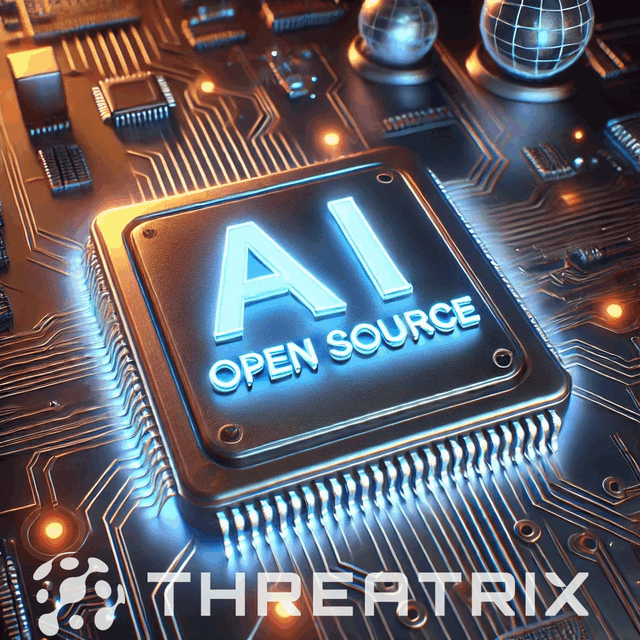DeepSeek-R1, an AI model developed by DeepSeek, a relatively unknown Chinese company, has taken the AI industry by storm. Its release has sparked intense discussions, particularly in the context of the ongoing U.S.-China competition in AI. However, the real story here isn’t purely geopolitical, though there is a layer of geopolitical tension. Instead, the key issue is the increasing influence of open-source AI, challenging the dominance of closed-source models — a view shared by Yann LeCun, Meta’s chief AI scientist.
LeCun, a staunch advocate for open-source AI, recently posted on LinkedIn: “For those who see DeepSeek’s performance and think ‘China is surpassing the U.S. in AI,’ you’re missing the point. The real takeaway is that open-source models are outpacing proprietary ones.”
While this statement may seem simple, its implications are profound. DeepSeek-R1 didn’t emerge in isolation. It is built upon open-source research foundations like Meta’s Llama models and the PyTorch framework. DeepSeek’s success highlights the growing competitiveness of open-source AI, which is becoming a serious contender to the proprietary models of major tech companies.
Open-Source AI vs. Closed-Source AI
The Open Source Initiative defines open-source AI as a system made available under terms allowing anyone to use, study, modify, and share it without permission. This freedom offers incredible flexibility, similar to having access to an entire toolbox—countless possibilities for what can be created.
In contrast, closed-source AI keeps its source code and algorithms private. Proponents of this model argue that it provides better privacy protection by controlling how the technology is used and limiting access to the underlying data and systems.
However, as co-founder and CEO of Labelbox, Manu Sharma, points out, “It’s becoming increasingly difficult to keep foundational technologies like AI closed-source. Almost all the major technologies in AI are open source and have become widely adopted.” Sharma suggests that AI may follow the same trajectory as databases and operating systems, where open solutions eventually dominate.
The success of DeepSeek-R1, which reportedly only cost $6 million to train, starkly contrasts the billions spent by OpenAI, Google, and Anthropic on their models. Kevin Surace, CEO of Appvance, called it a “wake-up call,” noting that China’s focus on low-cost, rapid AI model development contrasts with the U.S.’s strategy of building large, expensive models.
Is an AI Price War Coming?
DeepSeek’s model has raised important questions about the future of AI pricing. Sam Altman, CEO of OpenAI, tweeted that DeepSeek’s model was impressive, especially considering its cost-efficiency. This efficiency could drive down the cost of AI. This success could pose significant financial risks for venture-backed firms that rely on closed-source models to justify their high valuations. To avoid funding challenges, these firms may need to find ways to differentiate themselves beyond merely training large language models (LLMs).
Elon Musk, CEO of Tesla and SpaceX, has pointed out that as open-source AI models like DeepSeek gain traction, the cost of AI development could significantly decrease, leveling the playing field for smaller tech players. He suggests this shift could spark a new wave of innovation by reducing the financial barrier to entry for startups and independent developers.
Fei-Fei Li, Professor at Stanford University, has raised concerns that while cost-effective AI models democratize access, they could also lead to a race to the bottom in terms of quality and ethical standards. She emphasizes that, while lowering costs is beneficial, it’s crucial to balance affordability with responsible AI development, ensuring that the integrity of AI systems is not compromised in pursuit of cheaper models.
Security and Privacy Risks
While the rise of open-source AI presents significant opportunities, it raises concerns about security and privacy. DeepSeek’s open-source model has fueled anxiety about data collection and potential misuse, especially since the company’s training data sources remain largely unknown. Syed Hussain and Neil Benedict, co-founders of Shiza.ai, voiced concerns that DeepSeek’s open-source model could be part of a broader strategy to undermine the U.S. AI market, with privacy implications tied to the company’s Chinese origins.
Despite these concerns, Thurai emphasizes that transparency should be prioritized over cost when choosing AI models. Companies must have clear insights into their creation process and potential risks, whether the model is open or closed.
Impact on the AI Supply Chain
DeepSeek’s impact has already been felt in the financial markets, particularly with Nvidia. The chipmaker’s stock initially faced volatility due to concerns that cheaper AI models could reduce demand for Nvidia’s GPUs. However, Sharma remains optimistic about Nvidia’s long-term prospects. The demand for AI inference—running models efficiently at scale—is likely to soar, even as training costs decrease. Companies may focus on enhancing hardware for inference workloads rather than solely concentrating on developing the next generation of massive training clusters.
What’s to Come for Open-Source AI
DeepSeek-R1’s success demonstrates that high-performance open-source models are becoming a significant force in AI development. LeCun emphasized that DeepSeek benefited from open research and open-source tools like PyTorch and Llama. This open collaboration allows everyone to profit from advancements in AI.
As we advance, businesses may need to reconsider their reliance on proprietary models and explore the advantages of contributing to and benefiting from the open-source AI ecosystem. The debate will shift away from geopolitics and towards whether AI’s future will be more open, accessible, and shared or closed, proprietary, and expensive.
The rise of open-source AI is inevitable, and it seems clear that its influence is only set to grow.
As open-source AI continues to grow and disrupt traditional models, managing AI code compliance has become increasingly vital. Threatrix is the market leader in AI code compliance, offering solutions that help developers and legal teams navigate the complexities of licensing and copyright requirements. With automated compliance checks and smooth integration into existing workflows, Threatrix ensures that organizations can take full advantage of AI innovations without worrying about legal risks. As the use of AI expands, Threatrix provides the necessary tools to help businesses stay compliant and focus on what truly matters—innovation and growth.

